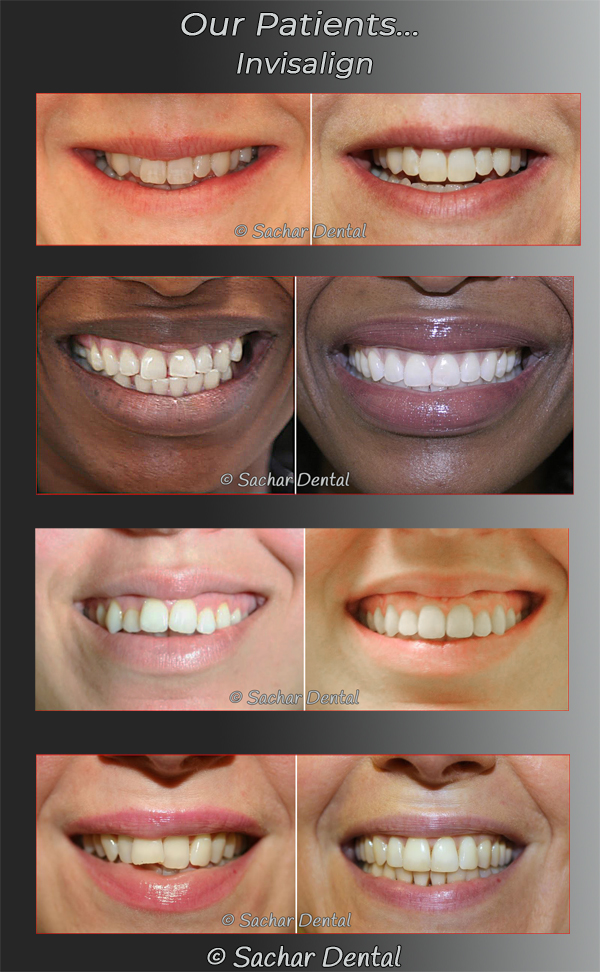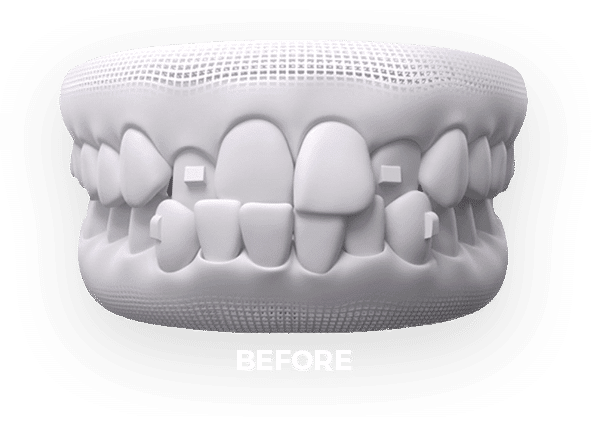Invisalign vs. Traditional Dental braces: Which Choice Is Right for You?
When taking into consideration orthodontic therapy, the option in between Invisalign and standard braces presents a number of important aspects that merit mindful analysis. Invisalign offers a discreet option with detachable aligners, while typical dental braces give a much more visible yet reliable solution for serious imbalance.
Overview of Therapy Options

On the other hand, standard braces contain steel brackets and cables that are bound to the teeth. This technique uses constant stress gradually to achieve placement. While efficient for complex orthodontic issues, traditional dental braces need regular check outs for adjustments and can position difficulties in preserving oral health as a result of the trouble of cleaning around cables and braces.
Both options have their advantages, and the choice typically hinges on particular dental conditions, way of living preferences, and patient compliance. Eventually, seeking advice from an orthodontic professional is critical for figuring out one of the most ideal therapy plan customized to private needs. Recognizing the nuances of each option can significantly influence the total success of orthodontic treatment.
Visual Considerations
A considerable variable influencing the option between Invisalign and traditional dental braces is the aesthetic appeal each therapy uses. Invisalign aligners are crafted from clear plastic, making them essentially unnoticeable when put on. This discreet look is especially attracting adults and teenagers who might feel uncomfortable regarding their orthodontic treatment. The capacity to maintain an all-natural smile throughout the positioning process can significantly boost the individual's confidence in expert and social settings.
On the other hand, conventional dental braces consist of steel braces and cords, which can be more noticeable. While developments in orthodontic innovation have caused the advancement of smaller sized braces and colored elastics, standard braces still keep an even more conspicuous profile. For some individuals, the visibility of braces may discourage them from seeking required treatment.
Ultimately, the choice between Invisalign and traditional braces might pivot on individual choices concerning looks. Patients that focus on discernment commonly favor Invisalign, while those that are much less worried concerning exposure may select typical dental braces. Recognizing the aesthetic effects of each alternative is critical for making an informed decision that lines up with one's way of life and choices.
Comfort and Convenience

In regards to convenience, Invisalign aligners are removable, allowing people to appreciate their favorite foods without constraint and maintain optimum dental health. Cleaning and flossing are streamlined, as the aligners can be obtained during these routines, whereas standard braces call for careful steering around cables and brackets.
In contrast, standard dental braces necessitate normal adjustments, making them much less hassle-free for those with hectic timetables. Overall, the convenience and convenience of Invisalign make it an enticing choice for numerous people seeking orthodontic therapy.
Treatment Period and Efficiency
While both Invisalign and traditional dental braces are effective in fixing dental imbalances, the duration of therapy can vary significantly in between the two options. Usually, Invisalign therapy can take anywhere from 12 to 18 months, depending on the intricacy of the instance. The clear aligners work by slowly moving teeth right into their wanted settings, and regular follow-ups with an orthodontist aid make sure progression remains on track.
On the other hand, standard braces commonly call for a longer dedication, generally ranging from 18 months to three years. This is because of their fixed nature and making use of cords and braces, which can be extra efficient for intricate cases and extreme misalignments (Invisalign). directory The therapy performance of traditional braces is well-documented, as they enable specific modifications and better control over tooth movement
Eventually, the selection in between Invisalign and conventional braces may depend upon both the awaited therapy period and the particular oral problems available. Consulting with an orthodontist is essential, as they can offer tailored recommendations based on private demands, making sure the selected approach aligns with preferred end results and timeframes.
Cost Contrast and Insurance Coverage Choices
Expense plays a substantial function in the learn the facts here now decision-making process for people thinking about orthodontic treatment, whether going with Invisalign or typical braces. Typically, the expense of Invisalign ranges from $3,000 to $8,000, while conventional dental braces normally set you back between $2,000 and $6,000. Aspects influencing these prices include the complexity of the instance, the period of treatment, and geographical place.
Many dental insurance coverage strategies provide partial coverage for orthodontic treatments, however the specifics can differ extensively. Normally, traditional braces may be extra regularly covered by insurance coverage plans compared to Invisalign, which some insurance providers categorize as an aesthetic procedure.
Furthermore, numerous orthodontic methods supply adaptable layaway plan, making both therapy alternatives much more accessible. People must ask concerning possible funding choices and discounts for upfront payments. Reviewing the total cost, consisting of insurance benefits and settlement plans, is important for making a notified decision that straightens with both visual preferences and budget considerations.

Verdict
In summary, the selection between Invisalign and conventional dental braces rests on several variables, consisting of aesthetic choices, convenience, treatment duration, and cost. Invisalign provides that site a very discreet, removable option that helps with dental health and dietary flexibility, while standard dental braces might be better for complex oral problems and often come with a lower rate factor. Inevitably, consultation with an orthodontist is vital to assess specific scenarios and figure out the most suitable treatment choice for accomplishing ideal dental alignment.
When thinking about orthodontic therapy, the choice in between Invisalign and traditional braces provides numerous crucial aspects that merit mindful analysis.Contrasting Invisalign and conventional braces discloses unique treatment alternatives for orthodontic improvement.While both Invisalign and standard dental braces are effective in fixing dental misalignments, the period of therapy can differ substantially in between the two choices.Expense plays a significant role in the decision-making procedure for people considering orthodontic therapy, whether deciding for Invisalign or typical braces.In summary, the selection in between Invisalign and standard dental braces hinges on numerous elements, including aesthetic choices, convenience, therapy period, and expense.
Comments on “Frequently Asked Questions Concerning Invisalign: Everything You Required to Know”